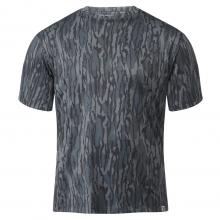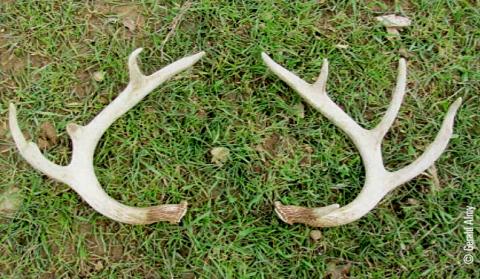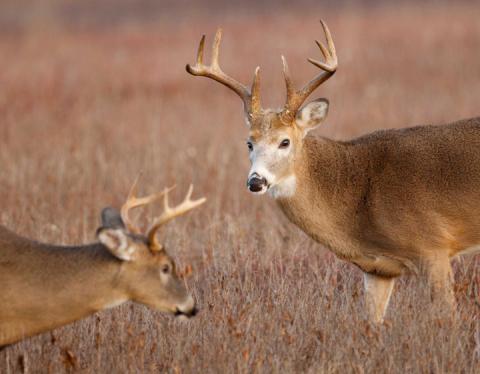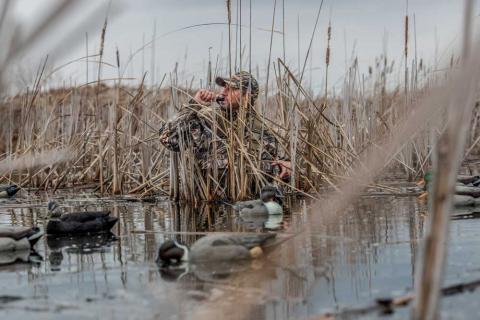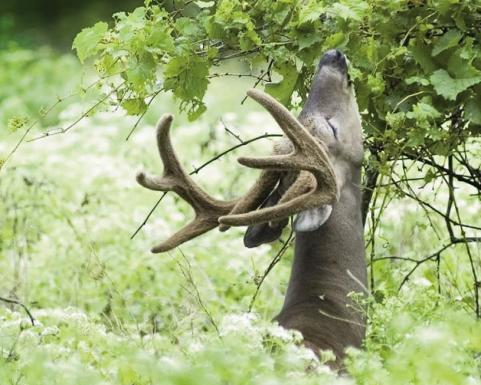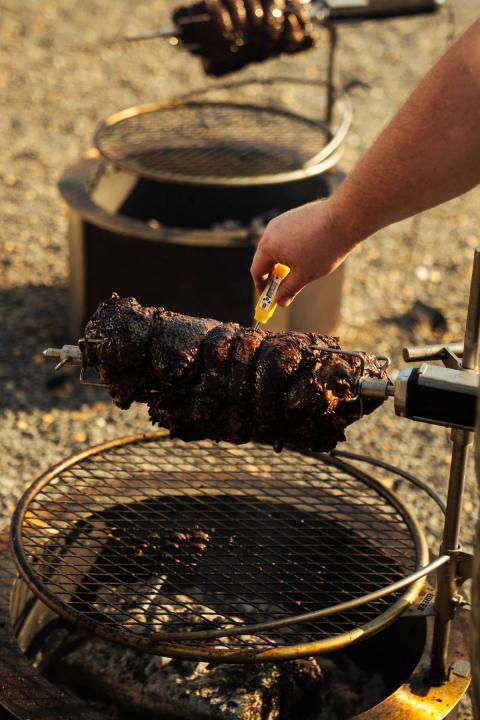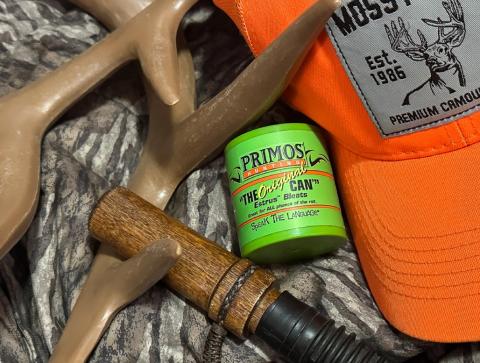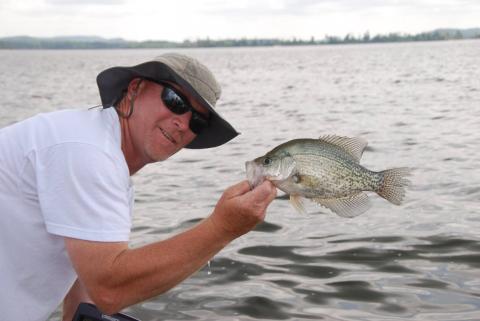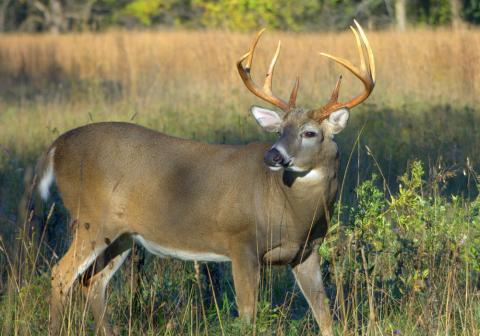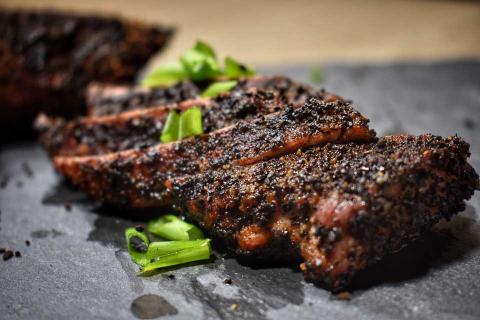Brad Mormann | Originally published in GameKeepers: Farming for Wildlife Magazine. To subscribe, click here.
Late summer and early fall is a time of year when more than whitetails are starting to go through changes - we as hunters are changing too. The work in the storage shed is starting to pick up as we sort through our hunting gear and exchange whitetail and waterfowl stuff for turkey and bear equipment. The work in the field is also in full swing as we seed our favorite food plots in preparation for exciting hunts to come in the fall. Just like preparing for and throwing a party, the preseason and season are exciting, but what happens when the lights turn up and it’s time to cleanup and send people home? Do you have a plan for spring for any plots that remain growing?
Cool season annuals like small grains such as winter wheat and oats, annual clovers, radishes and brassicas to name a few, perform extremely well as forages to attract your herd during the fall hunting season, but some don’t stop growing just because you stop visiting them on the way to your stand. Most of them grow on through the spring and early summer, especially in the southern half of the country. This growth cycle, especially in the case of small grains, can be good or bad depending on your goals, game, and seed mix planted. Here is where you hit a crossroads. Do you spray, mow, or let them grow?

Spraying
Weeds can be literally any plant that you don’t “intend to grow” that is stealing resources like sunlight, nutrients or moisture from your preferred crop. Luckily there are a ton of selective herbicides available to tackle almost any problem. The key is to accurately determine which, or what type of problem weed you are dealing with, and then select the herbicide accordingly.
When only grasses such as wheat, rye, or oats are planted, or broadleaf plants such as clovers or alfalfa are planted, herbicide selection can be much easier because there are a variety of herbicides that target either grasses or broadleaves. Herbicide application can get a bit trickier when a mix of grasses, forbs and legumes are used, often requiring a wick applicator like Weed Wiper or a spot sprayer. In some instances you must sacrifice one component to retain the other(s).
If you’re unfamiliar with herbicides and their uses, a short trip to your local NRCS (Natural Resources Conservation Service) office or agricultural supplier can put you in touch with a technician or expert farmer who is well versed in herbicide use, you may even get a cup of coffee or bag of popcorn out of the deal. Just remember that for small to mid-size food plots, a storage building of high dollar equipment usually isn’t necessary. Often a backpack sprayer, and a little knowhow and experimentation can go a long way.
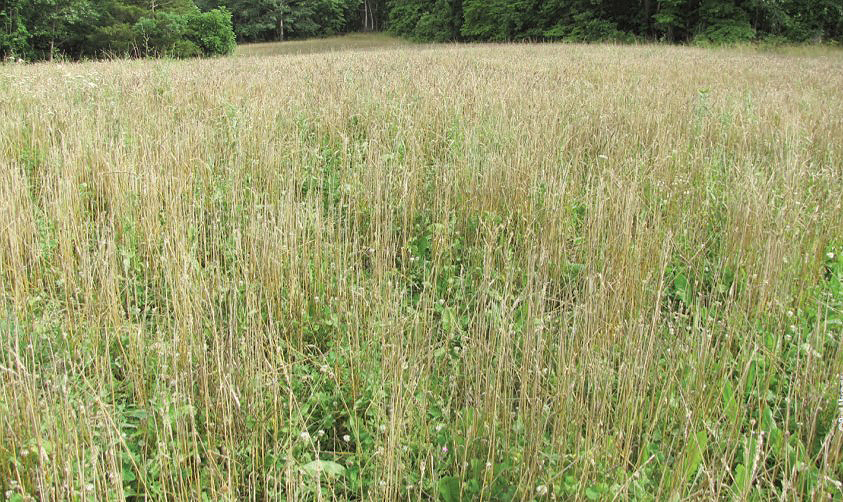
What if the food plot is weed free and doing what it was bred to do – grow green and lush? Well, I can think of at least one instance when making a lush green food plot or at least a component of it, turn brown and wither is a good thing. Where’s the first place turkeys like to go when they fly down from their roost in the spring…somewhere dry? Knee to waist-high wheat, oats or rye is typically not one of those places. Those of us who have mistakenly tried to take the shortest path across a field of rapidly growing small grains after a night of heavy dew can attest to this. Forty yards into the field and your boots begin filling up with water. This is not where a turkey or any bird wants to be, and if it’s the only field you’ve got to hunt, you are out of luck until the sun has been up for at least a few hours.
Even dry grass this tall is not a draw to a gobbler who wants to be seen while he’s strutting. Luckily these cool season grasses have fairly weak stems especially when they are sprayed early, say less than 10 inches tall. In mixed plots of broadleaves and small grains, as I noted earlier, a grass selective herbicide can make the stems weak and wither away quickly to set the stage for strut’n gobblers.
In pure stands of small grains Roundup can be used. Since Roundup is a broad spectrum herbicide that kills most plants it can also help with transitioning a food plot to a warm season large grain plot such as corn or soybeans. Both, small grain or large, do best when competition is kept at a minimum, especially when aiming for a quality crop in the coming fall.
In the case of soybeans, and even corn in extreme circumstances, the size of the local deer population can determine how you prepare your plots. A large deer herd in relation to the quantity of food requires setting the stage for rapid soybean growth. This is critical to ensuring the young soybean plants overcome leaf loss from deer browsing and reach an advanced stage of growth where they can handle high browsing pressure.
There is no doubt spraying small grains during the spring eliminates the potential for seed head formation and small grain production, but planting cool season annual food plots provides more than just food from September to April. It also sets up the next crop for rapid growth. I’ve seen a pronounced example of this first hand on a very porous, rocky, west-facing food plot. I had planted a mix of winter wheat, clover and brassicas in half of the west facing hillside the fall prior, knowing that I would be planting the whole plot to corn in the spring.
The next spring I sprayed the winter wheat mix and no-till drilled the entire field. Within six weeks a dramatic growth difference occurred between the “winter wheat mix - fall planted side of the plot,” and the side not planted in the mix. The corn was 10-12 inches taller on the wheat mix side. At least two things contributed to this phenomenon:
- The green forage (cover crop) grew throughout the fall, winter, and spring when temperatures were warm, allowing the green forage to uptake and store nutrients that would have otherwise leached deep into the soil.
- The sprayed, dead plants among the growing corn acted as mulch to hold soil moisture which was a major growth factor on the west facing rocky plot.
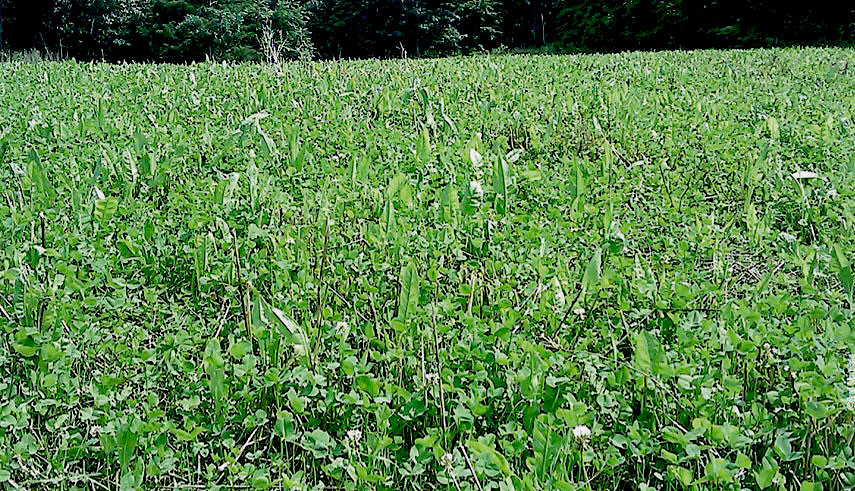
Harvesting and Mowing
In larger food plots planted in only one type of small grain there is the possibility that you may want to harvest the grain to help pay for additional management activities. During most years, the late spring/early summer maturation of the grain allows for a “grain check” and time to plant another crop. I say “most years” because if you have a later than optimal planting date of the following crop it may set it up for decreased production or complete failure if Mother Nature is unpredictable with rainfall as the summer progresses.
Another option is mowing. Obviously straight perennial clover plots are usually best mowed. However, it can work well to keep clover and small grains blended together in a more palatable forage stage while allowing for improved turkey hunting. Realize the grain is destined to bolt and produce a seed head. Mowing will keep it in check for a while, but eventually it will bolt, it just may be much shorter than normal if mowed.
Mowing may also be required if a strong growth of broadleaf weeds are shading out other food plot species in the plot or are preparing to go to seed. Knocking the weed-seed heads off before they mature can help limit weed growth in the plot in future years.
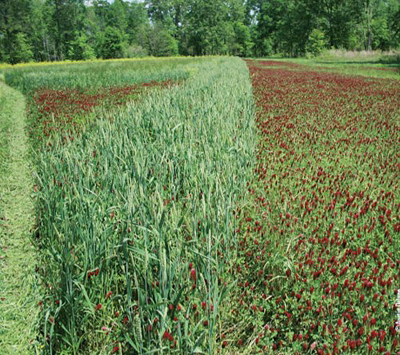
cereal grains and crimson clover was mowed. Gobblers
typically prefer shorter foliage when choosing a strutting
zone so they can be seen further.
Finally, when small grains are growing within a mix, mowing may be needed if the small grain is growing so thick and/or tall that it is shading out other mix components like chicory or clover. I haven’t had much trouble with this when planting winter wheat or oats in low to moderate quality soils but high quality soils with high planting rates can require at least one mowing to keep competition in check.
Depending upon the cereal grain, you may also need to keep the crop itself in check by mowing. Small grain cover crops can reduce growth and yield of following crops for several reasons. Plant chemicals (allelochemicals) released into the soil by their roots or by decomposing residues can inhibit growth of some crops, but it can also inhibit the growth of some weed species too. In addition, some cereal grains if left to grow in the spring can grow five to six feet tall. What a mess! It takes lots of time and work to deal with the consequences of letting these grow unchecked. Now you’ll have to either remove or burn the extreme amount of plant residue, or disk and wait, disk and wait, etc.
Let it Grow
When a food plot mix contains small grains and other small seeded forbs and legumes that I want to last for at least a full year, I try my best to leave the small grain stand as long as possible. Depending on the grain variety, the seeds can be a high quality forage that deer and turkey take advantage of. Literally in one week seed heads can be full and blowing in the wind, the next week only pointy stems remain. The phenomenon never ceases to amaze me. You are feeling like the food plot has gone stagnant and then it gets pounded over a short time.
Not every food plot is created equal due to its proximity to disturbance or amount of high quality forage it may produce. Some plots will stand full of grain for much of the summer until the plot is finally mowed or the seeds drop. I have often found that small grains will reseed the plot and potentially develop over 20% of a new stand (when in a blend) the second fall maintaining the diversity in a plot of clover or chicory without additional cost.
Lastly, allowing small grains to remain throughout the summer adds a tremendous amount of cover for game birds like quail, pheasant, and turkey as they feed through the plot. Some will grow tall enough to provide cover for whitetails; however, this much plant residue can be difficult to deal with before replanting. This structural cover among a quality food source can be extremely important for poults and even adults when predators are in the area.
Just a couple of years ago I was turkey hunting a chopped corn field with my feeding hen decoy set up 20 yards in front of me. A gobbler and a couple of hens were 250 yards out and closing the distance just over a small rise from my position. I noticed a red-tailed hawk was in the area but didn’t give it much thought. Suddenly, with a whoosh, my hen decoy’s head was pinned to the ground and two sets of talons were digging deep into it. The hawk had struck.
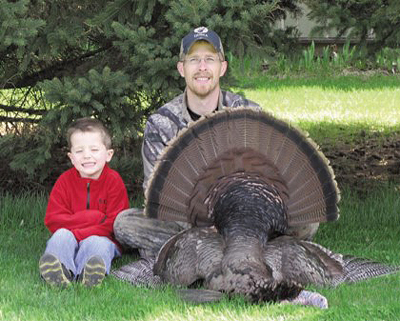
gobblers. You may just need to mow or spray small grains
in your favorite hunting spot if they are getting too tall.
Shocked by the situation, mostly by the chance that a hawk was going to mess up the distant gobbler’s march toward my position, I waved my arms and gave the hawk a disapproving growl of words. Its sharp eyes immediately caught my movement and it lifted off and flew to a nearby tree to analyze what just happen. I sat back and did the same. “A hawk really just tried to take down an adult hen turkey…” Although my hen decoy didn’t exactly duck or weave to avoid the hawk, in the day-to-day life of a turkey it would have been much easier for it to forage in the relative concealment of waist high wheat and oats than a chopped corn field.
As you can see there is more than one way to manage your cool season food plots in the spring and summer, and I’m sure there are more. Cool season food plots containing small grains are one of my favorite and most productive habitat management tools. Luckily there is no need to be searching for all of the different components of a quality mix containing small grains. Biologic’s new “Winter Grass Plus” mix contains a variety of small grains, in addition to rape, radishes and clover that are sure to attract and hold game throughout the fall and spring. An important aspect is to take into consideration what your goals are for the plot when you are planting it so you can be ready to possibly alter it in some way to keep it producing, whether that’s forage, cover, or game.







